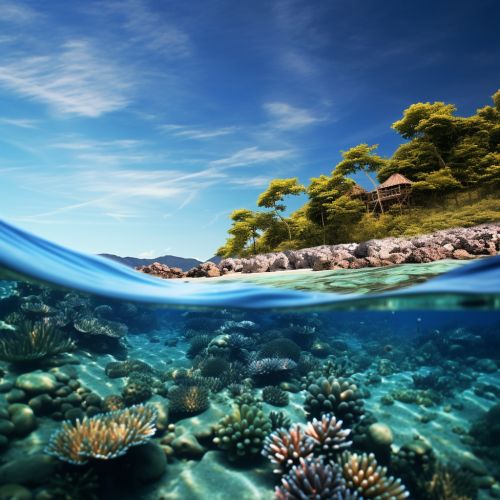Marine Protected Areas
Overview
Marine Protected Areas (MPAs) are designated regions of the ocean where human activities are regulated for the purpose of conserving and managing natural and cultural marine resources. These areas can be established by governments or other entities and can vary greatly in purpose, legal authority, and management approach.
Classification
MPAs can be classified into several categories based on their objectives, level of protection, and the types of activities they allow. The International Union for Conservation of Nature (IUCN) has defined six categories of MPAs, ranging from strictly protected areas that aim to preserve biodiversity to areas that allow sustainable use of marine resources.


Objectives
The primary objectives of MPAs are to conserve marine biodiversity, protect endangered species, preserve cultural heritage, and promote sustainable fisheries. They also play a crucial role in climate change mitigation by preserving blue carbon ecosystems that sequester carbon dioxide.
Design and Management
The design and management of MPAs involve a range of considerations, including the selection of the site, the determination of boundaries, the development of management plans, and the implementation of monitoring and enforcement measures. The effectiveness of MPAs in achieving their objectives depends on various factors, such as the size of the protected area, the level of protection, and the involvement of local communities in management activities.
Benefits and Challenges
MPAs provide numerous benefits, including the protection of marine biodiversity, the enhancement of fisheries, and the promotion of tourism and recreation. However, they also face several challenges, such as enforcement difficulties, conflicts with other ocean uses, and the impacts of climate change.
Case Studies
Several case studies illustrate the successes and challenges of MPAs. For example, the Great Barrier Reef Marine Park in Australia is one of the largest and most well-managed MPAs in the world, while the Papahānaumokuākea Marine National Monument in the United States represents a unique approach to the co-management of MPAs by indigenous communities and federal agencies.
Future Directions
The future of MPAs involves several key issues, including the expansion of the global MPA network, the integration of MPAs into wider ocean management frameworks, and the adaptation of MPA management to climate change.
